
Induction cooktops vs. electric cooktops
Though induction and electric cooktops are both types of electric stoves, they generate their heat in very different ways. Electric cooktops produce radiant heat by passing electricity between heating elements and sending heat waves to cookware. Induction cooktops use copper coils to generate an electromagnetic field to heat cookware. If you’re deciding between induction and electric cooktops, use this guide to determine which stovetop is right for your home.
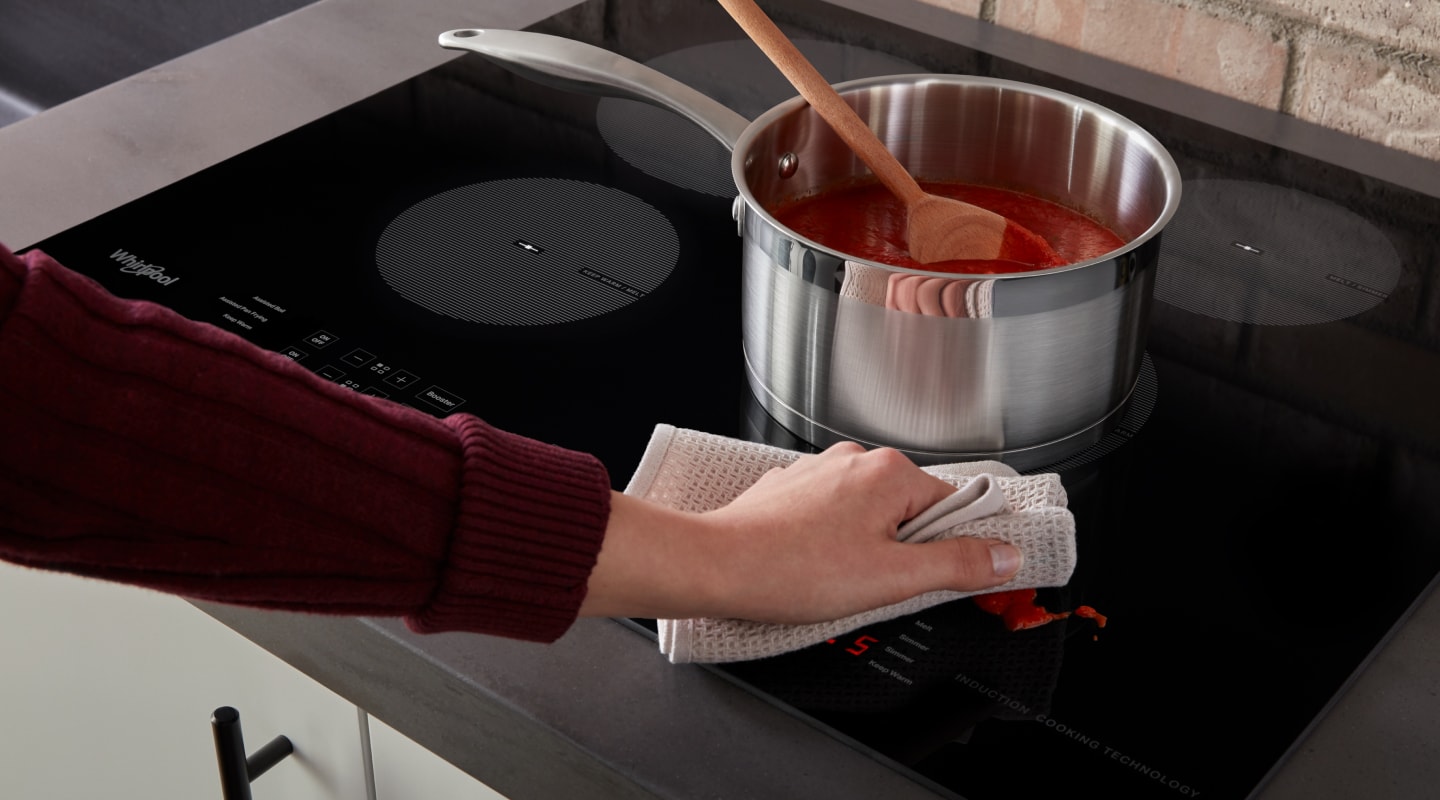
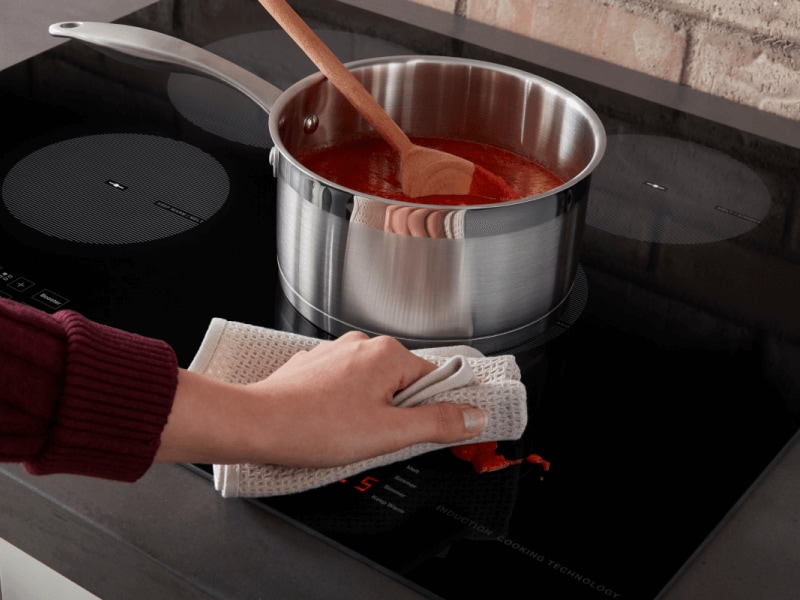
How do induction cooktops work?
Induction cooktops turn pots and pans into their own heat source by creating electromagnetic energy through copper coils that directly interact with compatible cookware. Induction cooktops can provide fast cooking and optimal cooking temperature because the heat doesn’t have to transfer through a cooking surface. This also allows for easy cleaning once cooking is complete as the surrounding glass top stays cool.
Do you need special cookware for induction cooktops?
Induction-compatible cookware includes enameled steel, cast iron, and some stainless steel pots and pans. Avoid using glass, ceramic, copper or aluminum cookware on an induction stovetop as they can scratch your induction cooktop and will not heat up.
Only ferromagnetic pots and pans are compatible with induction cooking. Ferromagnetic cookware either contains a layer or is entirely made of magnetic materials. When non-ferromagnetic cookware is used on an induction cooktop, it will not be detected by the burner and will not heat.
Are all glass top stoves induction cooktops?
All induction cooktops have a glass stovetop, but not all glass stovetops use the induction process to generate heat. Many radiant electric cooktops have a ceramic-glass cover over the heating elements to create a smooth surface for cooking.
Benefits of induction cooktops
Induction cooktops offer unique benefits to help make cooking for your family easier. Some benefits of induction stovetops include:
Temperature control: Cooking temperatures can be instantly adjusted to heat up and cool down more quickly.
Easy cleaning: Smooth, flat cooking surface without grates or burners stays cool during cooking to help cut down on cleanup time.
- Fast cooking: Induction technology transfers energy directly into compatible cookware. Whirlpool brand offers induction cooktops that can boil 2x times faster than electric cooktops with the Fast Boil feature.1
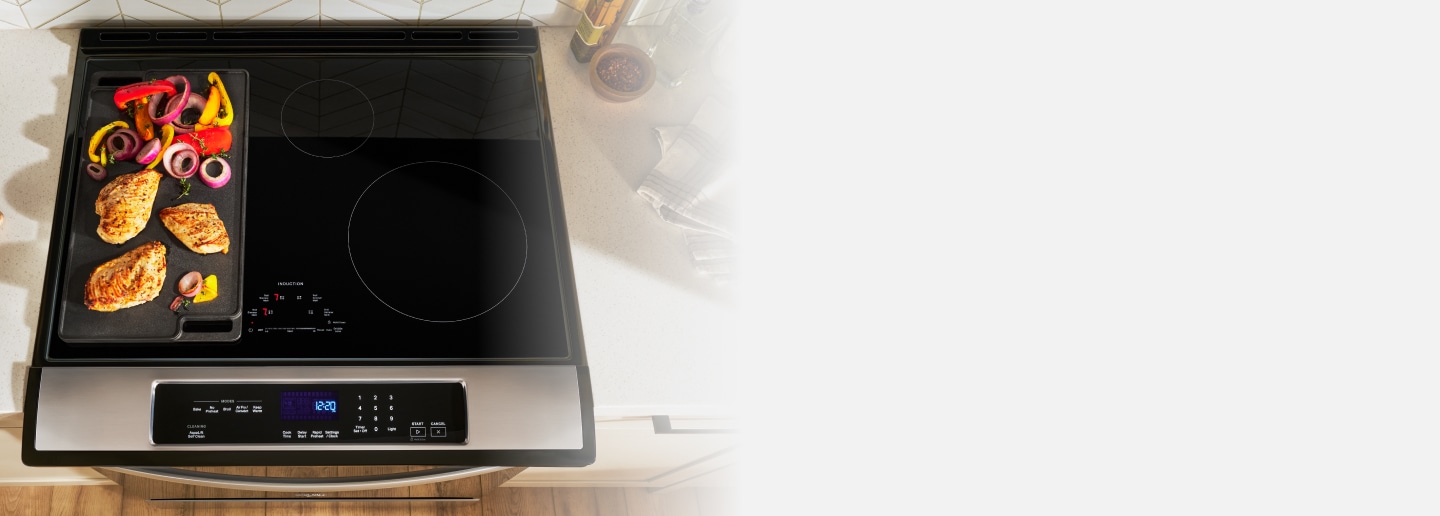
Whirlpool® Induction Cooktops
Get responsive temperature control
Induction Cooktops from Whirlpool brand offer fast cooking and responsive temperatures, paired with a sleek, easy-to-clean surface
Shop Whirlpool® Induction Cooktops
Whirlpool® Induction Cooktops help you get dinner done quickly and cleanly. Select models offer Temp Cook™ Induction Technology to help you avoid burning with dual temperature sensors that monitor and maintain your heat, while other models simplify mealtime with Smart Presets that automatically set the right temp to sear, simmer, saute and more. For simple cleanup, skip scraping and intense scrubbing of baked-on foods with the WipeClean™ Coating, the easiest-to-clean induction cooktop coating.2 Simply wet with water, wait, and wipe away.
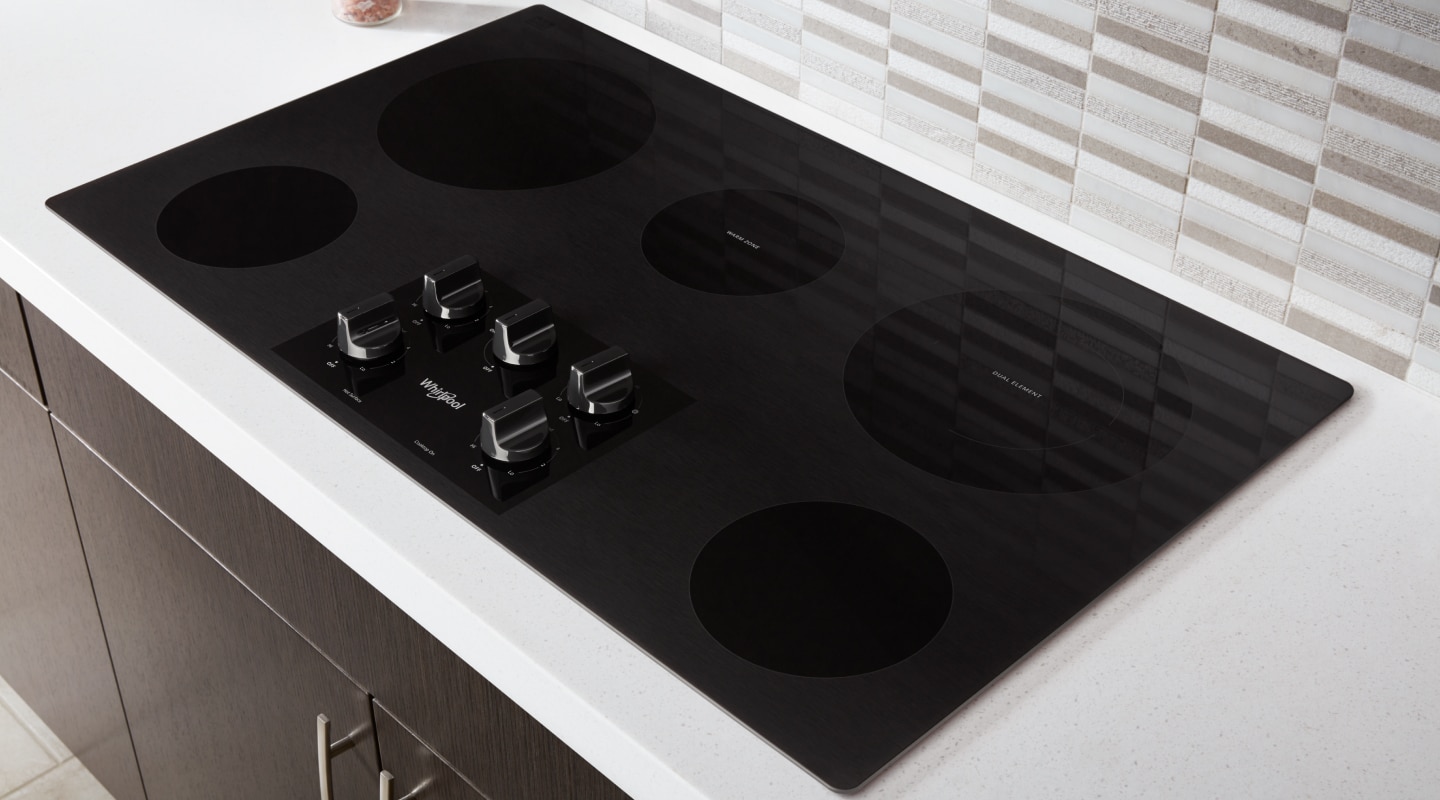
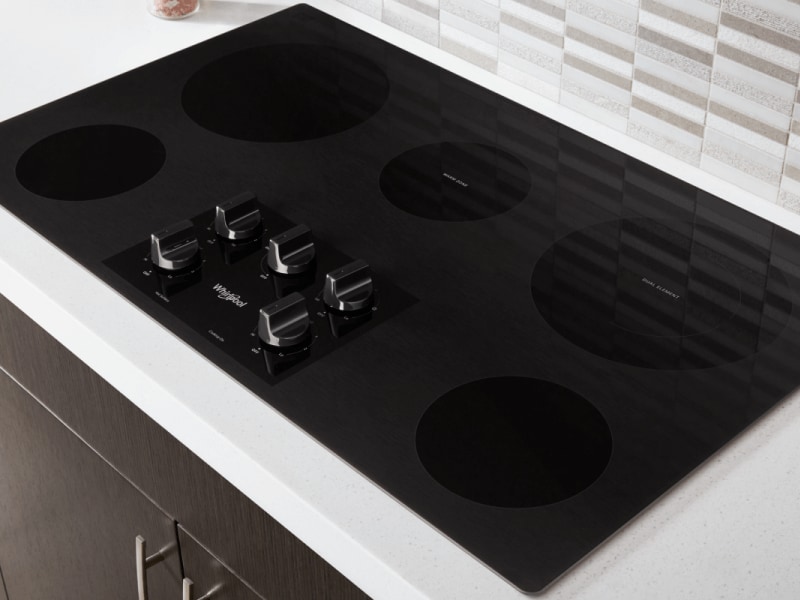
How do electric cooktops work?
Induction cooktops are one of three basic types of electric cooktops. The other types of electric cooktops—coil and radiant—feature metal coils that heat up and transfer heat to cookware placed on the stovetop.
- Coil cooktops use electricity to heat up a metal coil that comes into direct contact with cookware and heats from the bottom of the pot or pan.
- Radiant electric cooktops use heated coils that are housed beneath a ceramic-glass surface. This heat radiates through the surface to heat the cookware from the bottom.
Benefits of electric cooktops
When you’re shopping for a new cooktop, you have to weigh the pros and cons of each option to find the right model for your kitchen. Select electric cooktops from Whirlpool brand include the following benefits:
Easy cleaning: Smooth cooktop surfaces on newer models are easy to clean once completely cooled.
Flat surface: The flat surface of the ceramic-glass cover offers stability for pots and pans.
- Easy install: Electric stovetops only require grounded outlets for installation, no gas hook-up is needed.
Shop Whirlpool® Electric Cooktops
Electric cooktops from Whirlpool brand accommodate the way you cook. The FlexHeat™ Dual Radiant Element on select models features two elements in one with a 6-inch inner ring that's great for smaller pots and pans and a 10-inch outer ring that makes room for larger cookware. And, if individual dishes are ready before the rest of dinner, keep food warm on the Warm Zone Element, also available on select models.
Differences between induction and electric radiant cooktops
Cookware compatibility may be the first difference that comes to mind when you compare induction and electric radiant cooktops, but there’s more to consider. Discover eight key differences (and some similarities) between induction and electric radiant cooktops below to help you decide which cooktop is the right fit for your kitchen.

1. Heating speed
Because induction cooktops generate heat directly within cookware, rather than below the cooktop surface, you can expect dishes to reach high temperatures quickly. Radiant cooktops, however, need to transfer heat from heated coils through a ceramic glass coating and then into cookware, so tasks like boiling can take a bit longer to achieve.

2. Temperature control
On a radiant cooktop, lowering the temperature means waiting for the coil to cool down slightly before you see a change, but with induction, that delay is minimized. Induction cooktops respond almost instantly to give you more precise control without the wait, whether you’re cranking to a boil or reducing to a simmer.
Induction cooktops also owe their rapid responsiveness to the way they heat. The entire base of the pan warms quickly for fast results with every adjustment.

3. Cookware compatibility
Radiant cooktops are highly versatile when it comes to cookware—they work with just about anything, from aluminum and copper to ceramic, enamel-coated cast iron and stainless steel. Just be sure you’re mindful of the weight of the cookware as you navigate around the cooktop surface to help prevent scratches or cracks from dropped cookware.
Induction cooktops, on the other hand, require ferromagnetic cookware. That includes pieces made from cast iron, enameled steel or specially designed stainless steel that’s induction-compatible.

4. Safety considerations
Both induction and electric radiant cooktops can offer safety features like Control Lock Mode or a Hot Surface Indicator Light—available on select Whirlpool® Cooktops—to help prevent accidental use and help protect curious kids or pets.
Induction cooktops add another layer of protection by keeping the area around the pan relatively cool. Once the cookware has been removed, the surface cools down quickly, which is nice when there are a lot of helping hands in your busy kitchen.

5. Energy efficiency
Induction cooktops heat your cookware directly using electromagnetic energy, which means very little heat is lost between the cooktop surface and your food. In contrast, traditional electric cooktops rely on radiant heat from an element beneath the surface. Some of that heat can escape into the surrounding air or be lost as it transfers through the glass to your cookware.

6. Flexible cooking features
Both induction and electric cooktops often include features that impact cooking time and flexibility. For instance, select models of induction stovetops from Whirlpool brand feature Fast Boil, which can boil 2x faster than electric cooktops.1 Select Whirlpool® Electric Ranges offer added flexibility on the stovetop with features like the FlexHeat™ Dual Radiant Element that offers two elements in one, including a 6-inch inner ring ideal for smaller pots and pans, and 10-inch outer ring for larger cookware.

7. Ease of cleaning
Both induction and electric radiant cooktops offer a sleek, smooth surface without drip pans or hard-to-reach crevices, making cleanup quick and simple. Select Whirlpool® Induction Cooktops let you skip scraping and intense scrubbing of baked-on foods with the WipeClean™ Coating, the easiest-to-clean induction cooktop coating.2 Simply wet with water, wait, and wipe away.

8. Cost
In general, induction cooktops tend to have a higher entry price point than electric radiant models, but price can vary depending on features and design. It’s also worth considering the long-term costs of owning each type.
Induction cooktops can use less energy during cooking, which may show on your utility bill. On the other hand, while induction cooktops transfer energy more effectively, they require compatible cookware, which may add to your initial investment. Balancing these factors can help you choose the best fit for your kitchen and cooking style.
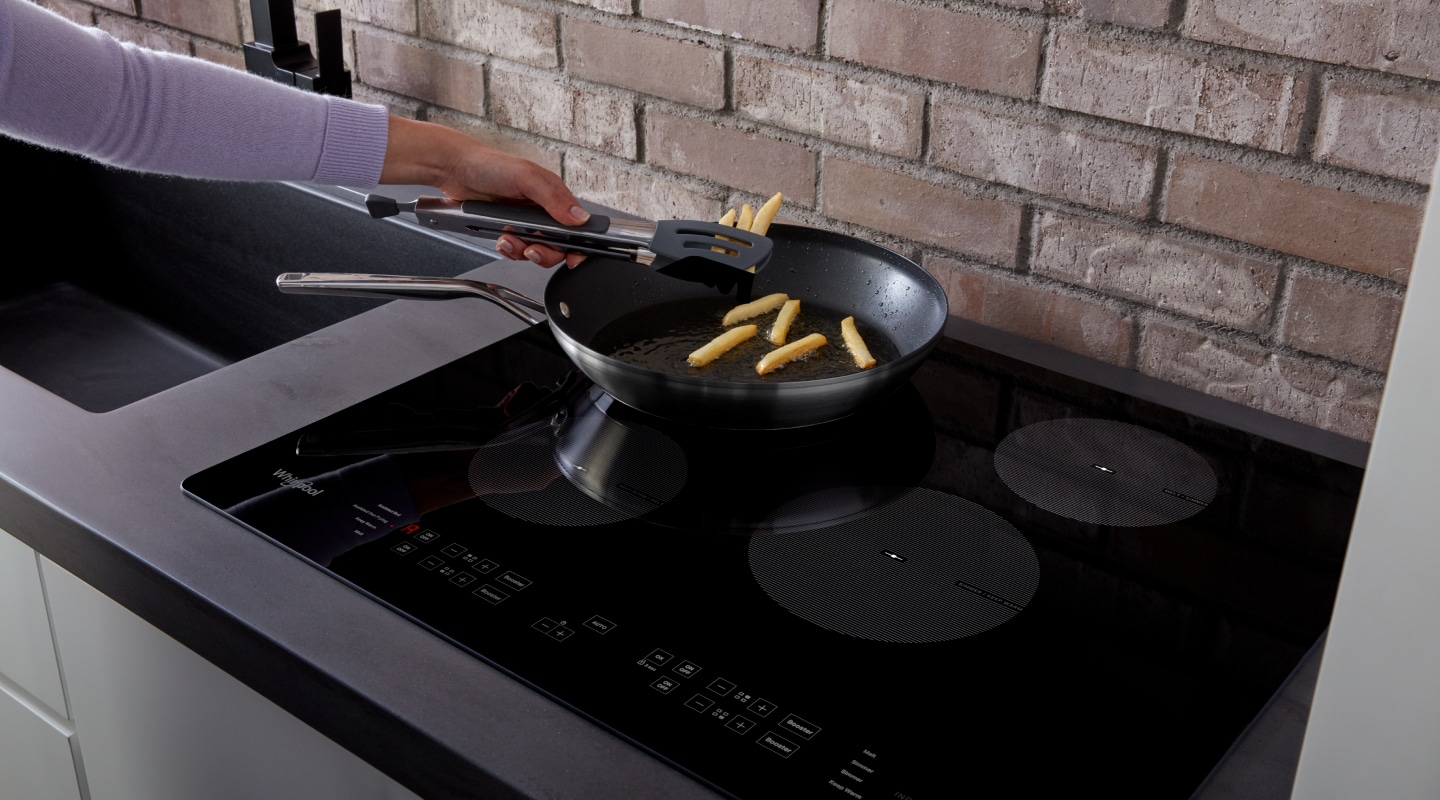

Is an induction cooktop better than electric?
Whether an induction or electric cooktop is the better option for your kitchen depends on your personal cooking needs and preferences.
If you’re looking to shave off a few minutes from your weekly meal prep time, you may want to consider an induction cooktop over a standard electric model. Select Whirlpool® Induction Cooktops can boil water 2x times faster than electric cooktops1, so you can save time in the kitchen.
Traditional radiant or coil cooktops are not as responsive as induction cooktops and may take more time to heat up and cool down. Heat loss may also occur more frequently with electric cooktops as they heat the surface under and around cookware, rather than heating the pots and pans directly.
If you prefer familiarity in your appliances, an electric stovetop may be the better fit for your kitchen. Since radiant or coil cooktops are often more commonly found, you may already know how to work with this type of electric stovetop and you won’t have to adjust to a new style. Radiant and coil cooktops also don’t require compatible magnetic cookware like induction options, so you won’t need to upgrade your kitchen’s cookware if you select a traditional electric model.
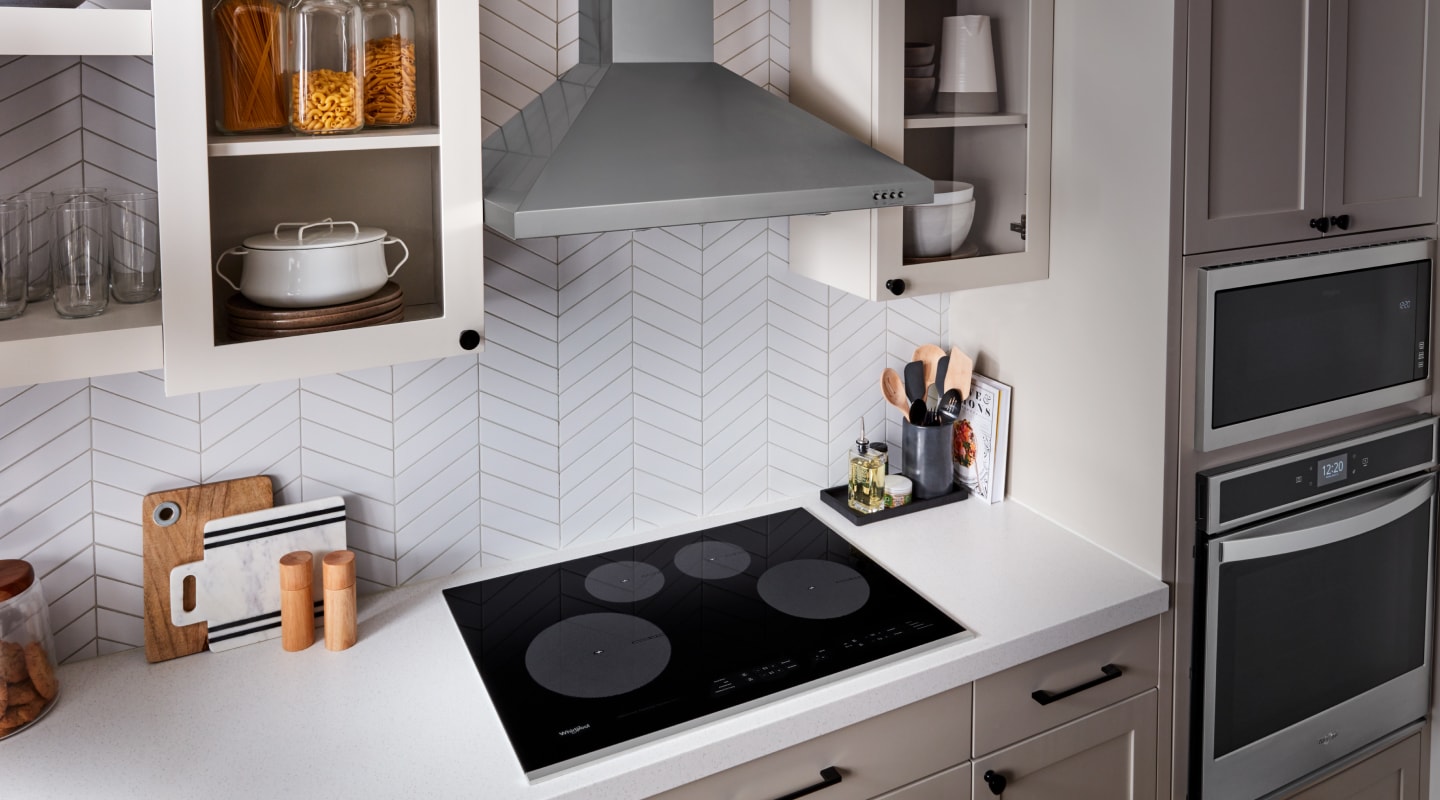
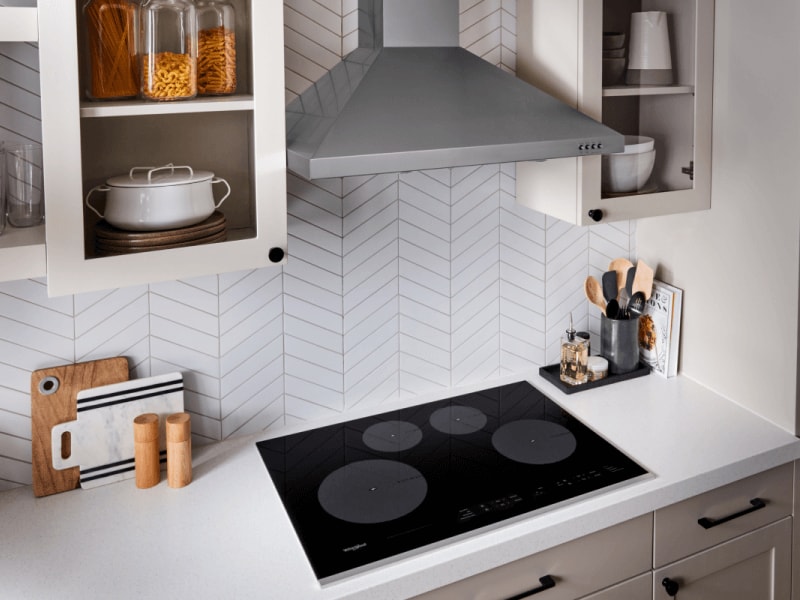
Discover Whirlpool® Induction & Electric Cooktops
Whirlpool® Induction and Electric Cooktops can help you get dinner to the table in less time. Select models offer features like the Warm Zone Element, assisted cooking functions for boiling and pan frying. Discover your next cooktop when you shop induction and electric options from Whirlpool brand. And explore this guide on the best induction cooktops for your kitchen.
Was this article helpful? Pass it on
Discover more from Whirlpool Brand


home heartbeat
Ready for more tips, home hacks and appliance guides?
Was this article helpful? Pass it on
1. Using power boost and compared to WCE77US6H.
2. When compared with cooktops with the same heating technology with similar wattages.


